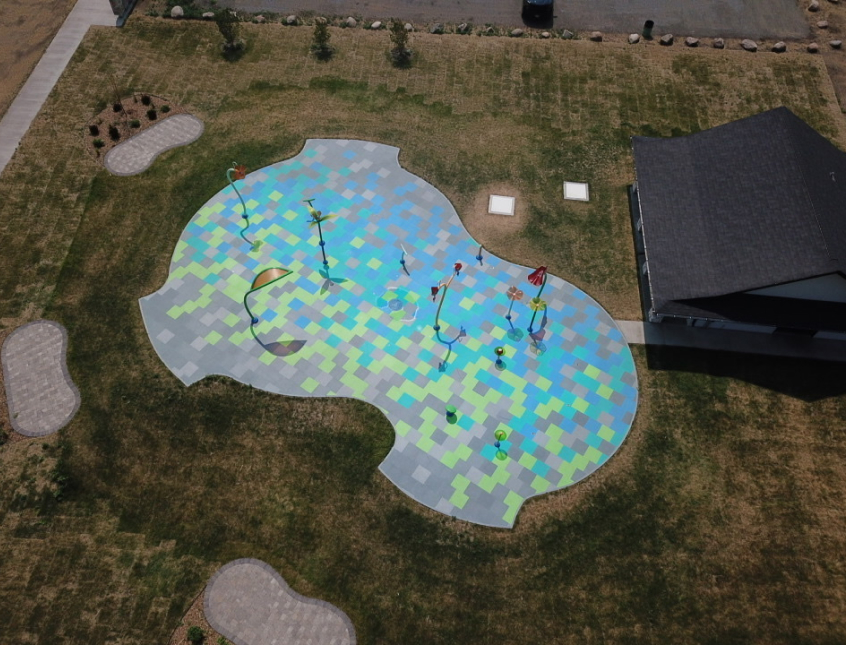NSF surfacing requirements, and why it matters to you
Acrylic Insights
[ ]
The NSF standard and its requirements.
What is NSF? The NSF or the National Sanitation Foundation, is an international, objective third party certification group that works with industry professionals to provide public health and safety-based risk management solutions. NSF standards cover much of the equipment that goes in and around recreational water areas (i.e. Splash pads, pool decks) including water sanitation, filtering, pumps, and now, surfacing. You will also see NSF stamps on everyday items like on your dishwasher, or common household cleaning products.

Since 2019, the NSF standard has recommended that splash pad surfacing materials meet certain criteria. NSF uses third-party testing to evaluate products for slip resistance, impact attenuation, chemical resistance, UV resistance, cleanability, and impermeability. We will talk about these different criteria in second, but as many facilities across North America have begun renovating existing facilities as well as plan for new ones, many have looked to this standard as a way to follow recommended best practices. Following these standards ensures quality products and the best user experience possible.
A surfacing option must meet the following 6 criteria developed by NSF in order to be certified:
- Slip Resistance: For obvious reasons, certified splash pad surfaces must be slip-resisting to minimize slip-and-fall injuries, while providing a minimum level of traction without being abrasive.
- Impact Attenuation: Values for impact attenuation on splash pads are much less than impact attenuation criteria for playgrounds. The purpose here is to provide small children a place to stumble and fall when inevitable falls do happen.
- Chemical Resistance: Chlorine is the obvious chemical in aquatic spaces. This criteria ensures the surface must be able to maintain its traction and impact attenations even after harsh chemical exposure.
- UV Resistance: UV testing is done to make sure it can stand up to ultra-violet radiation, representing the demanding year round outdoor exposure we have come to love here in North America
- Cleanability: This is a big thing for staff and maintenance considerations. Testing for this is done by mixing a dirty slurry that includes two major bacterial groups often found in aquatic environments, and this slurry is applied to the surface. This testing includes the joints in between the tiles to make sure the entire system is being tested appropriately.
- Impermeability: Another important consideration, especially for indoor applications. This standard requires that a surface must be at least as impermeable as concrete – which, if you’re curious, is 98.3% impervious. Any warm and wet area can inhibit bacteria growth especially when given a space to grow. Making sure that nothing can be absorbed into the surfacing material is a critical requirement. This is a major piece for Health and Safety departments across the country.
Life Floor is currently the only surfacing material on the market that meets all 6 criteria and has an NSF certification for aquatic spaces. All testing for these criteria are available upon request.
Why does NSF matter to you? It is always in a facility’s best interest to adhere to NSF standards in terms of both operational excellence and risk mitigation. Meeting NSF standards for sanitation, and health and safety provide facilities protection from potential lawsuits. The NSF standard largely reduces the chance of injuries, however, should an injury occur, operators can point to the fact that they were operating under the best and safest practices in the industry.
On a product level, using NSF certified products takes the guesswork out of finding safe, and high-performing products for aquatic operators. Independent, 3rd party testing ensures that a product with NSF certification can be trusted to serve public health.

